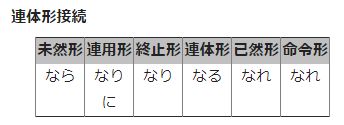Here is the answer ( Wiki )
My answer or quote is almost same with that of Aketoshi san, so I don't understand why his answer was downboted.
Anyhow, from the link,
It comes from the old Japanese way of use.
It is the remnant of the 4th form of the 古典日本語( Old Japanese ), which in much older time, being にあり、but shortened to なり。
The translation of the 4th form.
4 状態・性質を表す。
三寸ばかりなる人、いとうつくしうてゐたり。(竹取物語)
4 denote the condition, nature, characteristic.
There was a charming boy who is about 三寸 tall. ( Sanzun ( about 9.18cm )) ( 竹取物語 ( Taketori Monogatari ) )
The auxiliary's conjucated form is, as you can see too,

So 大いなる、完全なる、聖なる are divided to
大い(adjective, meaning big)+なる(this auxiliary)
完全(noun, meaning perfect)+なる(same)
聖(noun, meaning holy)+なる(same)
respectively, taking the attributive form of the conjucation.
So, Aketoshi san's answer is not wrong.
Since this form is the inheritance of the old meaning, today's "to become" can not be applied.

